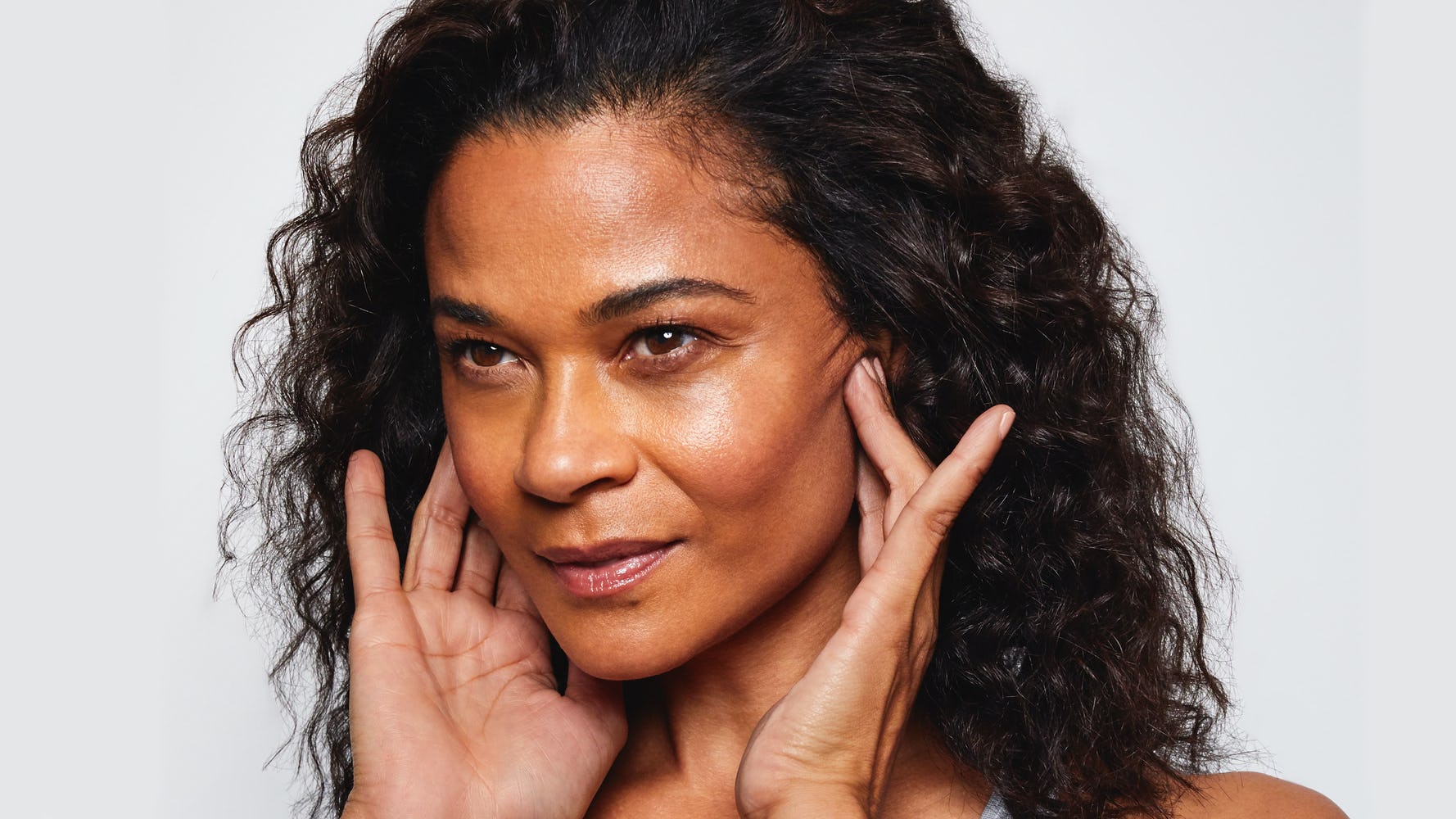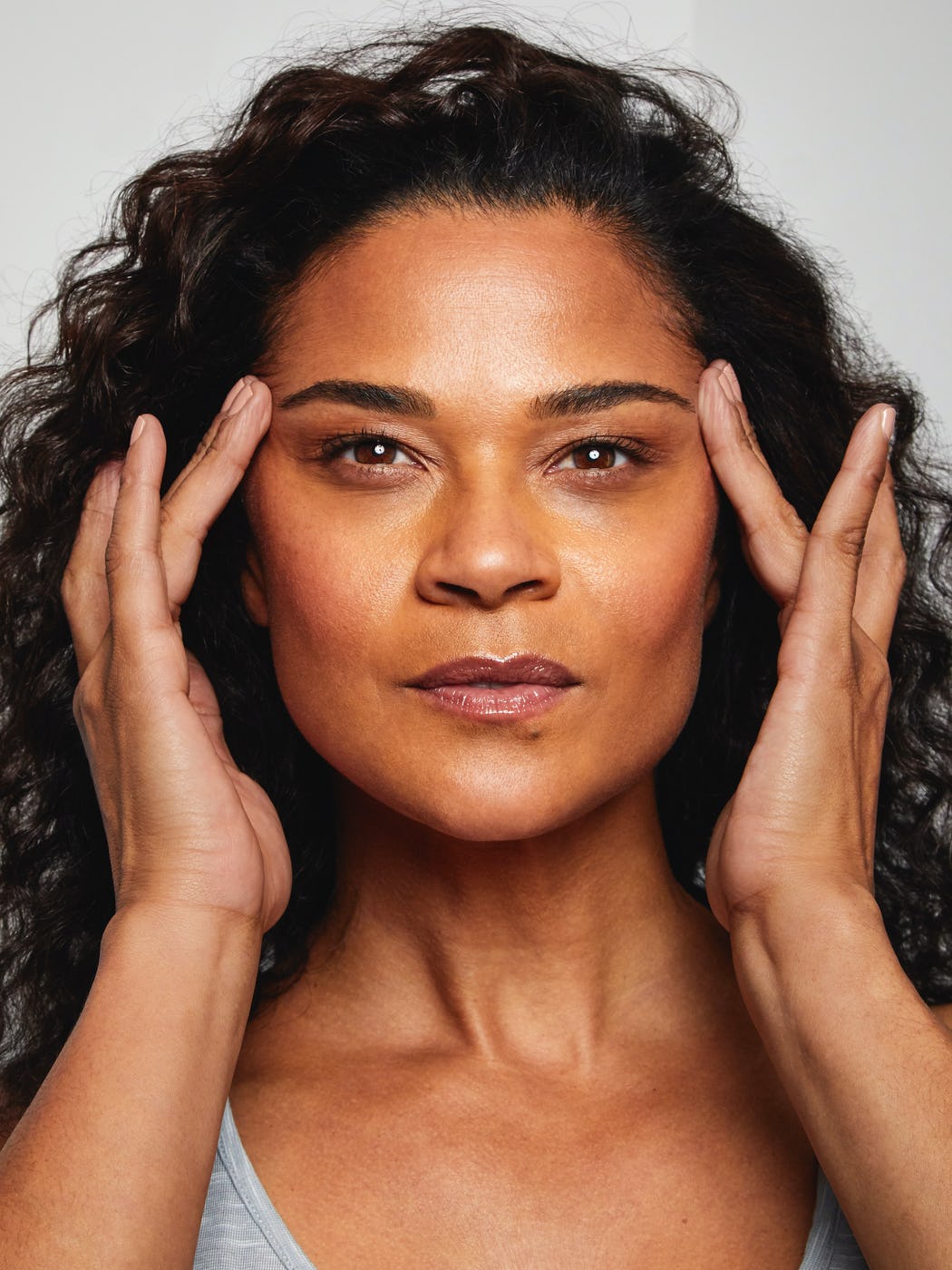You’re Seeing Thread Lifts Everywhere — But Are They Right For You?
Thespotlyte | July 26, 23

Gravity is real, and there’s no better proof than lax, sagging skin on your face. Okay, so maybe it’s not all gravity’s fault: The loss of collagen and elastin over time may have something to do with it, as can the breakdown of fat that, once upon a time, gave our face a youthful appearance, a.k.a. baby face. The obvious solution to this downward spiral is to lift the skin back up — which is where PDO thread lifts come in. Surgical PDO threads are used to lift tissue, like little marionette strings. Sounds easy, right?
Actually, medical threading has a shady history. The first iteration used permanent threads, which were an open invitation for infection. “Plus, they could snap,” recalls Jennifer Levine, MD, a double board-certified plastic surgeon in NYC. “Now, they’re stronger, they absorb, and there are many different types.” And because they’re absorbed by the body (yes, really!), the risk of infection is far less than it used to be. But there are still a lot of considerations with this procedure. Keep reading to learn everything you need to know about thread lifts.
What Is A PDO Thread Lift?
“A thread lift involves using surgical suture material to suspend fallen tissue or improve structure in the face, on or around barbs or cones that hold the tissue in place,” says Lisa Goodman, PA, founder of GoodSkin Los Angeles®. “The suture ‘threads’ will dissolve in approximately four to six months, while new collagen is produced to retain structure.” The threads themselves are made of a medical-grade, super-fine material called polydioxanone (PDO), which is thinner than a strand of hair.
They’re inserted under the skin using a cannula, which is a small, hollow tube, similar to what’s used with injectable cheek filler. (Don’t worry, you’re numbed first.) Under the skin, these PDO threads create a scaffolding to support new collagen and elastin growth. The barbs or cones that may be attached embed into the tissue, so when the PDO threads are pulled up, the skin is too.
Not all PDO threads are the same — there are a variety to choose from when it comes to threading. “There are threads that cause lifting, and there are also little mini or mono threads that don’t have the barbs and lead to collagen formation,” explains Dr. Levine. The PDO threads that have barbs “catch” the tissue and help lift it, whereas the smaller PDO threads help create a sort of scaffolding for new collagen, improving skin texture. Therefore, the latter are usually used “to produce collagen where there are fine lines in the skin, such as around the mouth or in crepey areas of the skin,” she says.
Dr Levine always begins by numbing the area. Then, she uses about four to six PDO threads on either side of the face, though the exact number may vary. “The whole process could take about 30 to 45 minutes,” she explains.
The Advantages Of PDO Thread Lifts
Lift without volume is what makes PDO threading appealing. In cases where loss of volume isn’t a concern, “sometimes they need lifting,” says Dr. Levine. “And for people who have mild laxity, a thread lift [may be] a great option.” It can also be a good pick if you’re not looking for something invasive, like a full-on facelift. Medical threading can also help with fat pad separation, which can create a subtle dent between the upper and lower cheeks. “For this, threads work quickly and wonderfully over other procedures that can take longer for results,” adds Goodman.
The results are immediate, although they might be hard to see at first due to swelling. Right afterwards, you may feel some tenderness in the area, but otherwise, the downtime should be minimal. “A typical recovery consists of two to three days of mild swelling and possible bruising,” says Goodman. “We recommend limiting excessive movement and activities such as hot yoga or intense workouts that may cause extra swelling or disrupt the thread during healing.”
If you’re looking to add volume to the cheeks, injectable fillers can also be helpful. “I usually put in a thread first, and then [later I’d consider adding] filler,” says Dr. Levine. She also sometimes follows thread lifts with Ultherapy® for additional tightening and lifting in the face. That said, the use of threads isn’t restricted to the face: they can also be inserted elsewhere on the body to lift sagging skin on the knees, buttocks, abdomen, and breasts, for instance.
EDITOR’S NOTE: Injectable filler is a temporary treatment that adds volume to areas of the face such as the lips, cheeks, and laugh lines. Like any medical treatment, it has potential risks and side effects. Be sure to talk to a licensed provider to see if they’re right for you.

Does not imply the person featured in the photograph had a thread lift treatment.
The Risks Of Medical Threading
Thread lifts are not all rainbows, butterflies, and collagen. There are some legitimate concerns, warns Sheila Nazarian, MD, board-certified plastic surgeon at Nazarian Plastic Surgery℠ in Beverly Hills, California. “I used them for a year and I was like, ‘This is stupid’,” she says. “The risks of prolonged pain — especially with smiling or with facial movements — and dimpling are too high. And they can also pop through the skin, requiring removal.”
Dimpling, or bunching, can happen if you have too much skin laxity going into the procedure. “Let’s say you place the thread beautifully. It goes inside, and then you get a nice pull. Well, what happens to all the extra skin?” explains Dr. Levine. “It can cause bunching.” (Imagine the ruching effect of a drawstring on fabric.) At that point, you may be better off with something more invasive, like a facelift, recommends Dr. Nazarian. “The downtime for a facelift is two weeks,” she says, “and that’ll last you 10 years.”
Plus, threads can be limited in their scope. “A thoughtful combination of procedures that correctly diagnoses problems is most important,” says Goodman. “For example, threads placed from the scalp are effective to treat prolapsed fat pads and tissues. However, there also needs to be proper underlying bone structure for the threads to pull the tissue around.”
Also, the idea that threads can hold up body skin is too good to be true to some doctors. “It’s a surgical thread,” points out Dr. Nazarian. “How’s it going to hold up the weight of the skin of your thighs?” She prefers radiofrequency devices, particularly FaceTiteTM, to get similar (if not better) levels of tightening with less risk. “There are many technologies out there that don’t require surgery that can be done awake, that give much better and longer-lasting results, and have less or equal amount of downtime,” she adds.
How Long Medical Threading Lasts
Thread lifts can offer both immediate and long-term benefits. “The thread is going to be absorbed, but then it’s going to make your body produce collagen,” says Dr. Levine. “I usually tell people that they should estimate that it will last 12 months.” Yet, depending on the amount of collagen production, overall results may last up to three years.
What may make a lot of difference is where the threads are placed, says Goodman. If they’re attached near the hairline, then “the lift can last six to nine months of full lift, and waning for another nine to 12 months,” she explains. “We don’t do non-scalp fixation, as we find the lift to last very short — less than three months — because the skin is elastic.”
How Much Medical Threading Costs
Thread lifts can cost anywhere from $1,500 to more than $5,000, depending on your surgeon, where you live, and how many threads you’re getting (plus any other procedure). Meanwhile, as of 2018, the average cost for a facelift was $7,655. That means thread lifts may not be the most financially sensible option compared to other procedures, but it could offer benefits in terms of downtime and recovery.
Learn more about medical aesthetics:
- Injectable Wrinkle Reducers, Chemical Peels & More In-Office Treatments You Can Get In Under an Hour
- 4 Promising New Treatments For Hair Loss
- My Battle With Dark Spots — 1 Serum, Peel & Laser at a Time
Dr. Jennifer Levine is a paid Allergan® consultant.






